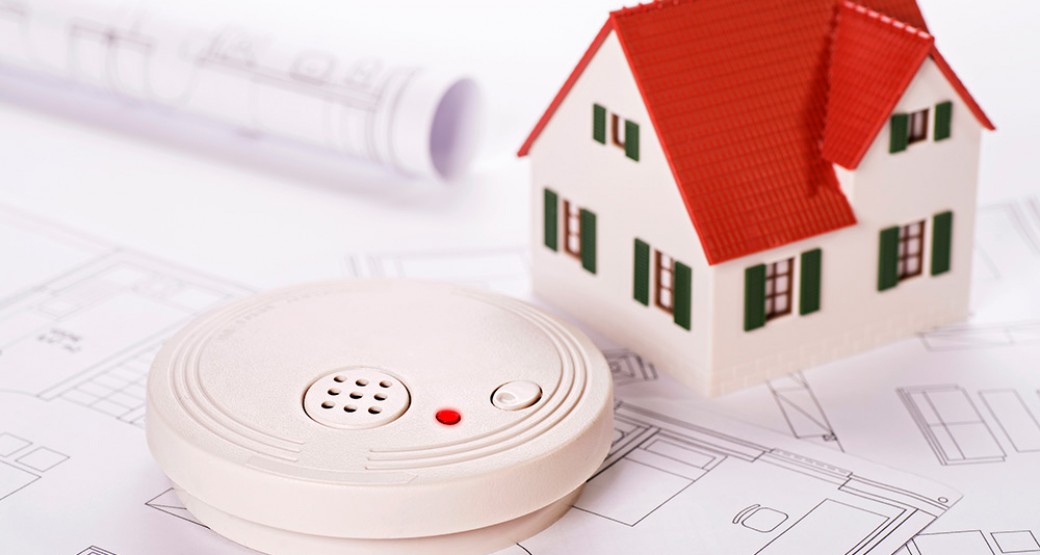It’s that time of year again: Daylight Saving Time on the first Sunday in November has everyone prepared to “fall back” one hour. This is the time that the International Fire Chiefs Association suggests that homeowners check their smoke and carbon monoxide detector batteries.
Is checking the batteries all you need to do? How many smoke and carbon monoxide detectors should you have? Is there additional maintenance required to keep your detectors functioning properly? Once you know the answers, keeping your detectors up to date isn’t hard to do.
Smoke and Carbon Monoxide Detectors Save Lives
Because these little devices sit mostly ignored until they’re set off, it’s easy to forget the importance of smoke and carbon monoxide detectors. In a 2015 National Fire Protection Association report, smoke alarms were credited with providing an early alert in more than half of residential fires reported to fire departments in the U.S. In cases where people died in house fires, three out of five were in homes with no smoke alarms or ones that were not functional.
Carbon monoxide detectors are just as important. Every year, more than 150 Americans die of poisoning from this colorless, odorless gas.
How Many Smoke and Carbon Monoxide Detectors Should You Have?
How many smoke and carbon monoxide detectors should you have in your home? Probably more than you think! According to the National Fire Protection Association (NFPA), you should install smoke detectors on every floor of your home, in each bedroom, outside of sleeping areas, and in hallways. The NFPA suggests a maximum distance of 30 feet between each smoke detector. Since heat and smoke rise, smoke detectors should always be installed on the ceiling.
Carbon monoxide detectors should be installed on every level of your home — specifically outside of sleeping areas, in the kitchen, in living/dining areas, and in the garage. Also install one near your gas furnace, if you have one, as well as in the laundry room if you have a gas clothes dryer.
Rather than rising like smoke, carbon monoxide mixes with the air. Because of this, carbon monoxide detectors are best installed at around knee height. If you have small children that might tamper with a detector, you can install it at chest height. Single-function carbon monoxide detectors are best because they can be installed at the proper level. If you’re using a dual-function smoke/carbon monoxide detector, install it on the ceiling so that it can properly detect smoke.
How to Properly Maintain Your Detectors
Remember that any sort of detector needs to be unobstructed in order to work properly. Make sure never to paint over any smoke or carbon monoxide detector. Also check each of your devices regularly to ensure that they’re free of dust. In addition to being the cause of many false alarms, dust can prevent your detectors from properly sensing a buildup of smoke or dangerous carbon monoxide.
Test your alarms once a month to make sure they’re functional. Also, talk with all members of your household (and anyone who will be visiting or babysitting) to make sure they’re familiar with the way the alarms sound if they are set off.
It’s also important to know that most smoke detectors last between eight and 10 years, while carbon monoxide detectors last between five and seven years. If your detectors are getting older, it may be time to replace them!
Interconnect and Monitor Them
A survey by the Consumer Product Safety Commission (CPSC) revealed that interconnected smoke detectors work better to alert occupants when a fire breaks out. Even better? Tie your smoke/carbon monoxide detectors into your home security system. This will ensure that they’ll do more than simply make a noise; they’ll notify the authorities and send help should a fire break out or if carbon monoxide builds up.
These are the easy-to-follow guidelines for proper installation, maintenance, and monitoring. While you hope a fire or carbon monoxide emergency never happens, the best way to prevent disaster is to be prepared!
At ProTech Security, we have a strong history of experience, innovation, and customer service. The ProTech Security Advantage is more than 30 years of service in Northeast Ohio and a strong commitment to providing quality, cost-effective protection for homes, businesses, educational institutions and government facilities. To see what ProTech Security can do for you, contact us today.




